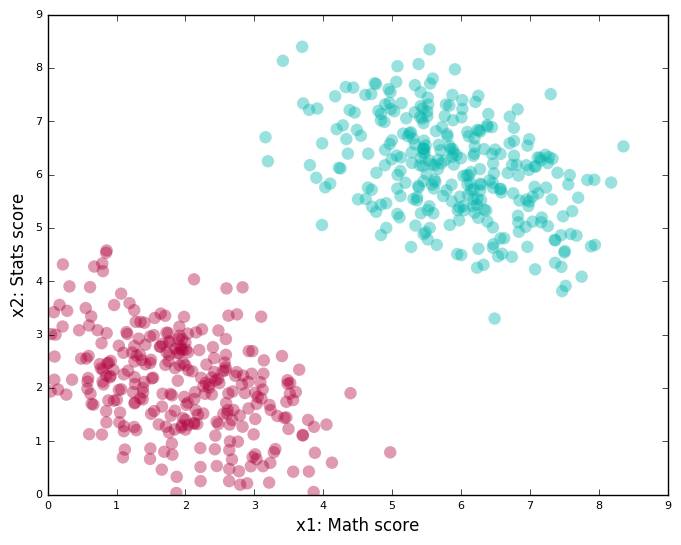【推荐】SVM实例教程
转自:爱可可-爱生活
After the Statsbot team published the post about time series anomaly detection, many readers asked us to tell them about the Support Vector Machines approach. It’s time to catch up and introduce you to SVM without hard math and share useful libraries and resources to get you started.
If you have used machine learning to perform classification, you might have heard about Support Vector Machines (SVM). Introduced a little more than 50 years ago, they have evolved over time and have also been adapted to various other problems like regression, outlier analysis, and ranking.
SVMs are a favorite tool in the arsenal of many machine learning practitioners. At [24]7, we too use them to solve a variety of problems.
In this post, we will try to gain a high-level understanding of how SVMs work. I’ll focus on developing intuition rather than rigor. What that essentially means is we will skip as much of the math as possible and develop a strong intuition of the working principle.
The Problem of Classification
Say there is a machine learning (ML) course offered at your university. The course instructors have observed that students get the most out of it if they are good at Math or Stats. Over time, they have recorded the scores of the enrolled students in these subjects. Also, for each of these students, they have a label depicting their performance in the ML course: “Good” or “Bad.”
Now they want to determine the relationship between Math and Stats scores and the performance in the ML course. Perhaps, based on what they find, they want to specify a prerequisite for enrolling in the course.
How would they go about it? Let’s start with representing the data they have. We could draw a two-dimensional plot, where one axis represents scores in Math, while the other represents scores in Stats. A student with certain scores is shown as a point on the graph.
The color of the point — green or red — represents how he did on the ML course: “Good” or “Bad” respectively.
This is what such a plot might look like:
链接(需翻墙):
https://blog.statsbot.co/support-vector-machines-tutorial-c1618e635e93
原文链接:
https://m.weibo.cn/1402400261/4144933939929687




